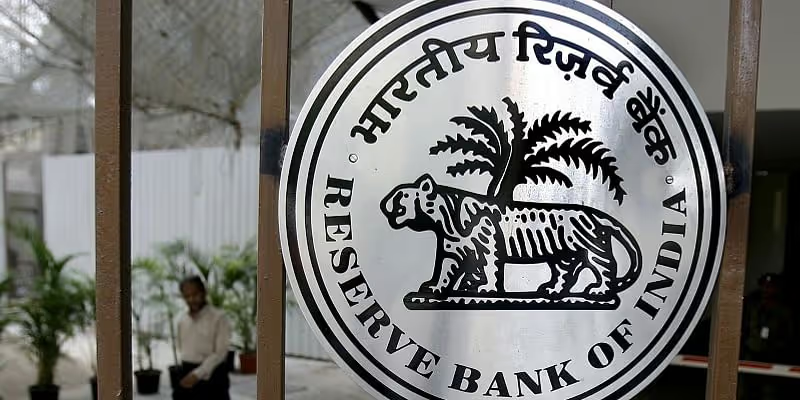RBI releases new FLDG guidelines for banks and fintech lenders
The RBI said the fintech lenders can provide a default cover for up to 5% of the loan portfolio of the bank, and also back in the form of cash deposits, fixed deposits with a lieu, or a bank guarantee.
The Reserve Bank of India (RBI) has issued strict guidelines permitting the use of First Loss Default Guarantee (FLDG) arrangements in digital lending.
Struck down by the regulator last year, the FLDG model was at the top of the wishlist for many fintechs sitting patiently for the past 10 months for clarity over their arrangement with banks for lending.
The FLDG (First Loan Default Guarantee) model is a lending arrangement between a bank/NBFC (regulated entity) and a fintech or lending service provider (mostly unregulated) where the latter guarantees to compensate up to a certain percentage of default in the loan portfolio.
The bank is happy to extend the loan as the fintech sources the client (borrower) and also guarantee a part of the loss to the bank, if the loan goes bad.
What new guidelines say
As per the new framework, the default cover could be provided for up to 5% of the loan portfolio and shall be invoked within a maximum overdue period of 120 days. Earlier, entities were offering almost 100% FLDG to banking partners. This exposed the banks and NBFCs to high risk as they would disburse the loans taking comfort from FDLG, but when defaults happen, the fintech platform may not have money to compensate for the losses.
“Any other implicit guarantee of similar nature linked to the performance of the loan portfolio of the RE (regulated entity) and specified upfront shall also be covered under the definition of DLG," the RBI said.
The lender must ensure that LSPs (lending service providers) publish the total number of portfolios and the respective amount of each portfolio on which the guarantee arrangement has been offered on their website.
Secondly, the fintechs must provide the hard guarantee in the form of cash deposits, fixed deposits with a lieu, or a bank guarantee in favour of the lender.

Additionally, RBI-regulated entities can only enter into a DLG agreement with a lending service provider or other regulated entities with which they have entered into an outsourcing agreement.
The circular further provides details on eligibility, structure, forms, tenor, due diligence, disclosure requirements, and customer protection measures.
The RBI said the recognition of individual loan assets in the portfolio as NPA and consequent provisioning shall be the responsibility of the lender. This means that if the loan goes into NPA, it will still be counted under the gross NPAs of the lenders irrespective of the FLDG arrangement. The lenders can invoke the DLG and be compensated, but the default will still be counted under NPAs.
These new guidelines apply to commercial banks, small finance banks, cooperative banks, non-banking financial companies (including housing finance companies), and LSPs.
Industry reacts
The new framework was welcomed by the majority of stakeholders and experts who termed it as an enabling move by the regulator, providing much-needed clarity towards the relationship between REs and LSPs.
“This will likely be a significant boost towards building innovative products and furthering credit penetration in India!” said Jitin Bhasin, Founder and CEO of fintech platform SaveIn.
Anand Kumar Bajaj, Founder, MD and CEO, PayNearby echoes similar views. "The guideline serves as a catalyst for encouraging partners of regulated entities to participate in a more expansive and inclusive provision of micro-sized loans."
Mathew Chacko, Partner at Spice Route Legal, shared the new norms will force REs to evaluate which LSPs they work with while others said the revival of the FLDG framework was essential for fintechs which are not making much headway in their alternative models or struggling to secure NBFC license for direct lending.
"A 5% CAP is reasonable. In a country which is credit-starved, and where the economy can be meaningfully impacted by the availability of credit, fintechs and REs have an opportunity to partner for more than just their own economic benefit—and a reasonable amount of risk and reward sharing is the only way to go!" said Sanjay Swamy, Managing Partner at Prime Venture Partners.
Another fintech player adds that the cap of 5% will ensure the emergence of strong underwriting platforms leading to lower lending rates. Navin Surya, Chairman, Fintech Convergence Council, believes that the guidelines will encourage healthy competition and drive further improvements in the lending sector.
Joginder Rana, Vice Chairman and Managing Director, CASHein elaborates on one of the RBI's directives to invoke DLG within a maximum overdue period of 120 days unless resolved by the borrower. "...this demonstrates a commitment to timely resolution of defaults. This will not only protect lenders from prolonged defaults but also encourage borrowers to take prompt corrective actions, ultimately fostering a healthier lending environment."
(The article was updated with quotes.)
Edited by Kanishk Singh








